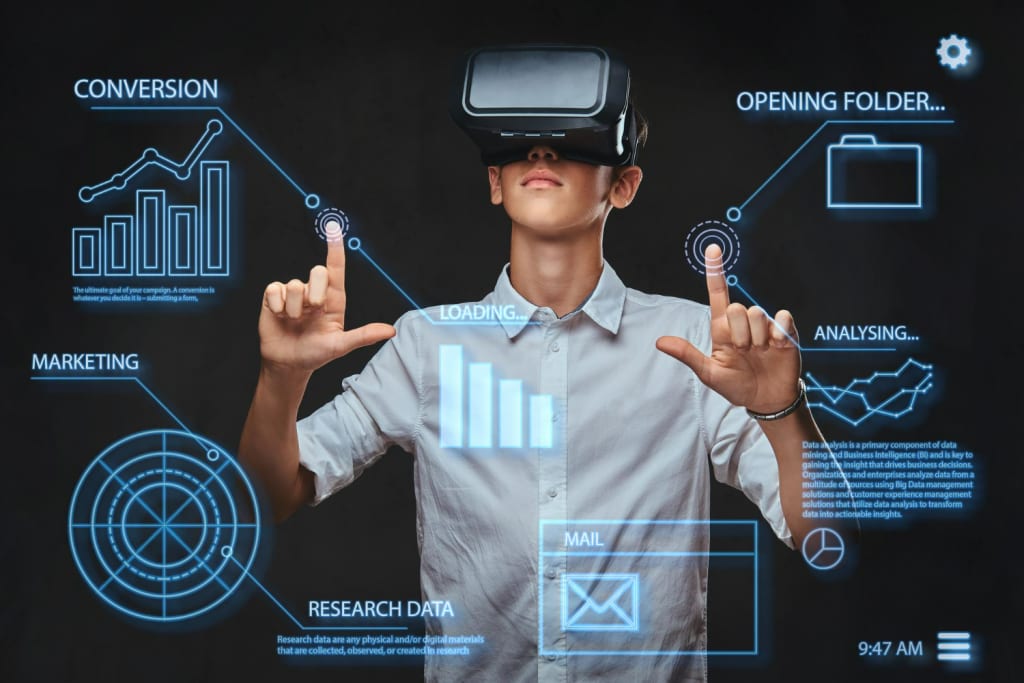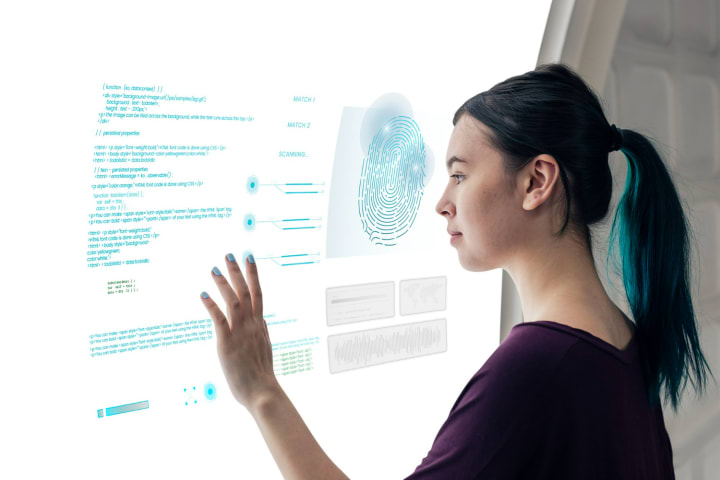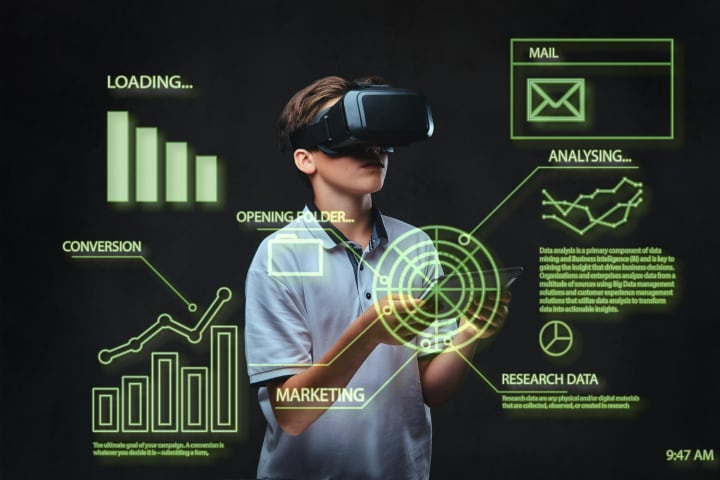Exploring the Future of Human-Computer Interaction
The evolution of technology has revolutionized the way we interact with the world.

As technology advances, so do the possibilities for human-computer interaction. From voice-controlled virtual assistants to augmented reality, the possibilities for innovative interactions between humans and computers seem endless. In this blog post, we will explore the exciting and ever-changing future of human-computer interaction and how it can shape the way we interact with technology in our daily lives.
The increasing importance of human-computer interaction
The way we interact with computers is changing. With the advancement of technology, there is an ever-increasing reliance on computers in our day-to-day lives. As a result, it is becoming increasingly important for us to be able to interact with them as naturally and intuitively as possible. In many ways, human-computer interaction is a key factor in the success of any technology.
From simple things like using a touchscreen interface to more complex activities such as natural language processing, human-computer interaction (HCI) has become an integral part of our digital lives. As technology continues to evolve, so will our reliance on HCI, which will lead to an even greater need for effective human-computer interaction solutions.
HCI has been around for quite some time, and its importance has only grown over the years. For example, HCI is used in medical devices to help doctors diagnose diseases, in autonomous vehicles to improve driving safety, and in smart homes, products to make everyday tasks easier. The importance of HCI can also be seen in other areas such as online gaming and virtual reality.
In short, HCI is becoming increasingly important as our reliance on technology continues to grow. As the world becomes more digitized, the need for intuitive and efficient HCI solutions will become even more important.
The trend towards more naturalistic interfaces
With the proliferation of artificial intelligence and the growing need for human-computer interaction, it has become increasingly important to develop naturalistic interfaces. Naturalistic interfaces are designed to be more intuitive and user-friendly by mimicking the way humans interact with their environment. These types of interfaces are often used in virtual reality, augmented reality, and voice-based systems.
One of the biggest advantages of naturalistic interfaces is that they can be easily adopted by users without learning any new technology or skills. For example, voice-based interfaces are becoming increasingly popular because they are easier to use than a mouse or keyboard. In addition, many naturalistic interfaces are designed to be adaptable and responsive, meaning that they can adjust to different user preferences and scenarios.
Another trend in human-computer interaction is the development of conversational interfaces, which are designed to simulate natural conversations between people. This type of interface uses natural language processing and machine learning algorithms to understand user requests and generate appropriate responses. For example, virtual assistants such as Siri and Alexa are conversational interfaces that are designed to understand spoken language and provide appropriate answers or solutions.
The emergence of naturalistic interfaces has opened up new possibilities for human-computer interaction. However, designing these types of interfaces can be challenging due to the complexity of understanding human behavior and preferences. As such, designers need to consider user experience when creating naturalistic interfaces to ensure that they are effective and engaging.
The role of AI in human-computer interaction

AI is playing an increasingly important role in how we interact with computers. AI-powered technologies are becoming more sophisticated, allowing for more natural and intuitive interactions between people and machines. AI can be used to improve user experience, for example by making recommendations, suggesting new features, or identifying user intent. AI can also help reduce errors and automate mundane tasks, making life easier for both users and developers alike.
By leveraging AI technology, user interfaces can become more context-aware, understanding user needs and responding accordingly. For example, a system may be able to detect what the user wants to do, such as searching for a specific item and offering relevant suggestions or results. This can make the experience much faster and more intuitive. AI can also be used to develop better-automated assistants and chatbots that can carry on conversations with users, provide answers to their questions, and offer more personalized experiences.
AI is not only changing the way we interact with computers but also how computers interact with each other. Automated systems can now learn from past interactions and develop new strategies for completing tasks more quickly and efficiently. This will allow for more complex interactions between humans and machines, enabling a richer, more intuitive user experience.
The challenges of designing for human-computer interaction
Designing for human-computer interaction (HCI) is a difficult task. Designers must create user interfaces that are both intuitive and aesthetically pleasing, while also allowing for a high level of interaction between the user and the computer. The challenge for designers is to create an interface that is both efficient and effective in communicating information to users.
One of the most common challenges faced by designers is how to effectively communicate complex information to users in a simple, easy-to-understand way. The use of visual metaphors, such as icons and graphical elements, can be extremely helpful in this regard. Additionally, designers must ensure that the user experience is consistent across all platforms and devices, regardless of the operating system or device type.
Another important challenge faced by HCI designers is designing interfaces that are accessible to all types of users. This includes users with disabilities and those who may not be familiar with computers. To make sure that everyone can access and interact with the interface, designers must ensure that they adhere to accessibility standards, such as making sure that text is legible and buttons are large enough to be easily clickable.
Finally, one of the biggest challenges faced by HCI designers is creating interfaces that can keep up with the rapidly changing technology landscape. As new technologies and tools emerge, designers must stay on top of the latest trends to keep their interfaces up-to-date and relevant.
In summary, designing for human-computer interaction presents many unique challenges. From communicating complex information in an intuitive way to designing for accessibility, HCI designers have their work cut out for them. Fortunately, with the continued advancements in technology, these challenges are becoming increasingly easier to tackle.
The future of human-computer interaction

The future of human-computer interaction is likely to involve more natural and intuitive methods of communication, such as voice and gesture recognition. Additionally, virtual and augmented reality technology may become more prevalent as a way for people to interact with computers and digital information. Another area of development is AI-powered personal assistants, which can anticipate user needs and perform tasks autonomously. As technology continues to advance, we can expect to see more seamless integration between computers and our daily lives, making it easier for people to access information and complete tasks without having to navigate complex user interfaces.
As AI grows more sophisticated, it will eventually be able to perform a wide range of tasks. Some experts predict that computers will eventually be able to think like humans, making decisions based on what they learn from experience. This will make them even more useful in our lives, enabling them to perform complex tasks such as driving cars and performing surgeries. You can learn more in detail about the Future Of Human-Computer Interaction (HCI).
It's a Wrap
Now that we've examined a few of the more prominent trends of human-computer interaction, you should have a good sense of the sorts of changes that are coming down the pike. And while we can't say for certain what kinds of features we'll see on touchscreen computer displays in five years or ten years, we do not doubt that they will continue to improve our experience and enhance our ability to interact with technology.
About the Creator
Bryan Smith
Bryan Smith is a content writer who helps companies tell their unique stories. An experienced writer who delivers content that solves problems for audiences.
Enjoyed the story? Support the Creator.
Subscribe for free to receive all their stories in your feed. You could also pledge your support or give them a one-off tip, letting them know you appreciate their work.





Comments
There are no comments for this story
Be the first to respond and start the conversation.